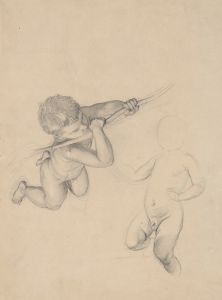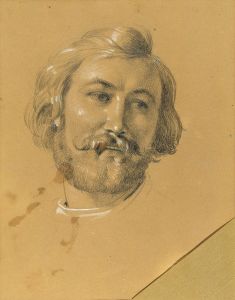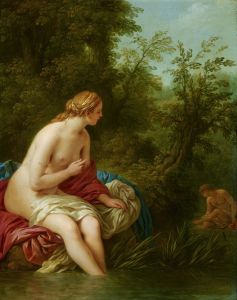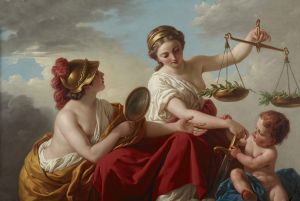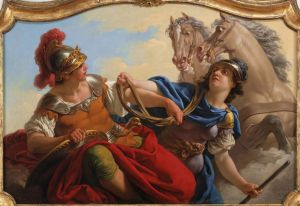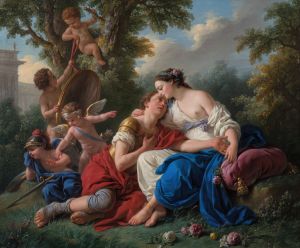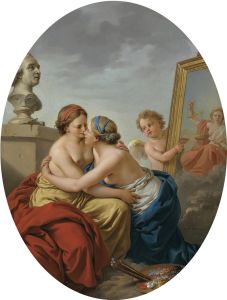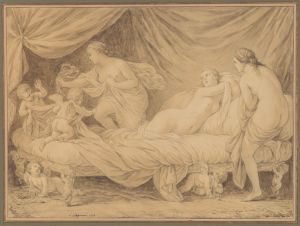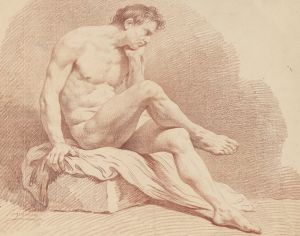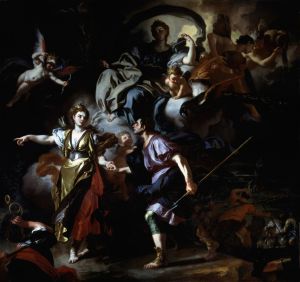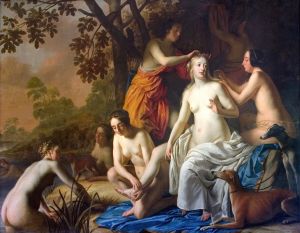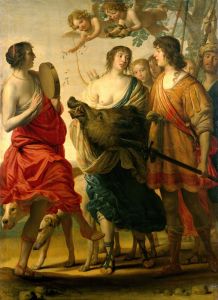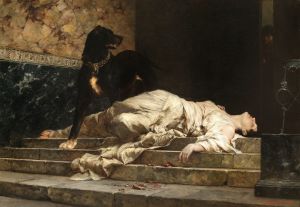
Diana and Endymion
A hand-painted replica of Louis-Jean-François Lagrenée’s masterpiece Diana and Endymion, meticulously crafted by professional artists to capture the true essence of the original. Each piece is created with museum-quality canvas and rare mineral pigments, carefully painted by experienced artists with delicate brushstrokes and rich, layered colors to perfectly recreate the texture of the original artwork. Unlike machine-printed reproductions, this hand-painted version brings the painting to life, infused with the artist’s emotions and skill in every stroke. Whether for personal collection or home decoration, it instantly elevates the artistic atmosphere of any space.
Louis-Jean-François Lagrenée's painting "Diana and Endymion" is a notable work from the 18th century, reflecting the artist's mastery in the Rococo style. Lagrenée, a French painter born in 1725, was known for his classical themes and elegant compositions, often drawing inspiration from mythology and history. His work is characterized by its graceful figures, delicate color palette, and refined execution, all of which are evident in "Diana and Endymion."
The painting depicts the mythological story of Diana, the Roman goddess of the hunt, the moon, and nature, and Endymion, a handsome shepherd or hunter. According to the myth, Diana fell in love with Endymion, who was granted eternal youth and immortality by Zeus, albeit in a perpetual slumber. This narrative has been a popular subject in art and literature, symbolizing the themes of eternal beauty and the intersection of divine and mortal realms.
In Lagrenée's rendition, Diana is portrayed with her characteristic attributes, such as a crescent moon on her forehead, signifying her connection to the lunar sphere. She is often shown in a tender and contemplative pose, gazing at the sleeping Endymion, who is depicted with idealized beauty, embodying the neoclassical ideals of harmony and proportion. The composition typically includes a serene landscape, enhancing the dreamlike quality of the scene.
Lagrenée's technique in "Diana and Endymion" showcases his ability to blend soft, flowing lines with a harmonious color scheme, creating a sense of tranquility and romanticism. The use of light and shadow in the painting highlights the gentle interaction between the figures, emphasizing the ethereal nature of the mythological encounter. This work reflects the Rococo style's emphasis on elegance, lightness, and decorative beauty, which were prevalent in French art during the 18th century.
The painting is part of Lagrenée's broader oeuvre, which includes numerous works commissioned by European royalty and nobility. He was a prominent figure in the French art scene, serving as a professor at the Académie Royale de Peinture et de Sculpture and later as the director of the French Academy in Rome. His contributions to the arts were recognized with several honors, and his works were widely exhibited and collected during his lifetime.
"Diana and Endymion" is housed in various collections, with versions or similar works attributed to Lagrenée found in museums and galleries that focus on 18th-century European art. The painting continues to be appreciated for its artistic merit and its representation of classical mythology, offering insight into the cultural and aesthetic values of the Rococo period.
Overall, Louis-Jean-François Lagrenée's "Diana and Endymion" remains a significant example of 18th-century French painting, illustrating the enduring appeal of mythological themes and the artist's skill in capturing the delicate interplay of human emotion and divine presence.





